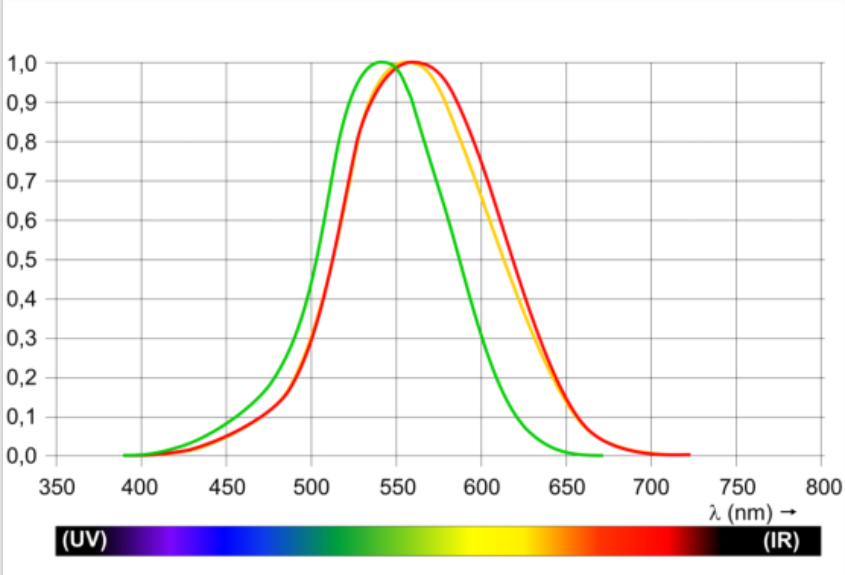As with many other aspects of color science, we must return to the spectral power distribution of a light source.
CRI is calculated by examining the spectrum of a light source and then simulating and comparing the spectrum that would reflect off a set of test color samples.
CRI calculates the daylight or black body SPD, so a higher CRI indicates that the light spectrum is similar to natural daylight (higher CCTs) or halogen/incandescent lighting (lower CCTs).
The brightness of a light source is described by its luminaous output, which is measured in lumens. Brightness, on the other hand, is entirely a human construct! It is determined by the wavelengths to which our eyes are most sensitive and the amount of light energy present in those wavelengths. We call ultraviolet and infrared wavelengths “invisible” (i.e., without brightness) because our eyes simply do not “pick up” these wavelengths as perceived brightness, regardless of how much energy is present in them.
The Function of Luminosity
Scientists in the early twentieth century developed models of human vision systems to better understand how the phenomenon of brightness works, and the fundamental principle behind it is the luminosity function, which describes the relationship between wavelength and perception of brightness.

The yellow curve represents the standard photopic function (above)
The luminosity curve peaks between 545-555 nm, which corresponds to a lime-green color wavelength range, and rapidly drops off at higher and lower wavelengths. Critically, luminosity values are extremely low beyond 650 nm, which corresponds to red color wavelengths.
This means that red color wavelengths, as well as dark blue and violet color wavelengths, are ineffective at making things appear bright. Green and yellow wavelengths, on the other hand, are the most effective at appearing bright. This can explain why high-visibility safety vests and highlighters typically use yellow/green colors to achieve their relative brightness.
Finally, when we compare the luminosity function to the spectrum for natural daylight, it should be clear why high CRI, particularly R9 for reds, is in conflict with brightness. A fuller, wider spectrum is almost always beneficial when pursuing high CRI, but a narrower spectrum focused in the green-yellow wavelength range will be most effective when pursuing higher luminous efficacy.
Color quality and CRI are almost always relegated in priority in the pursuit of energy efficiency for this reason. To be fair, some applications, such as outdoor lighting, may place a greater emphasis on efficiency than color rendering. An understanding and appreciation of the physics involved, on the other hand, can be very useful in making an informed decision in lighting installations.
Post time: Dec-23-2022

 Chinese
Chinese